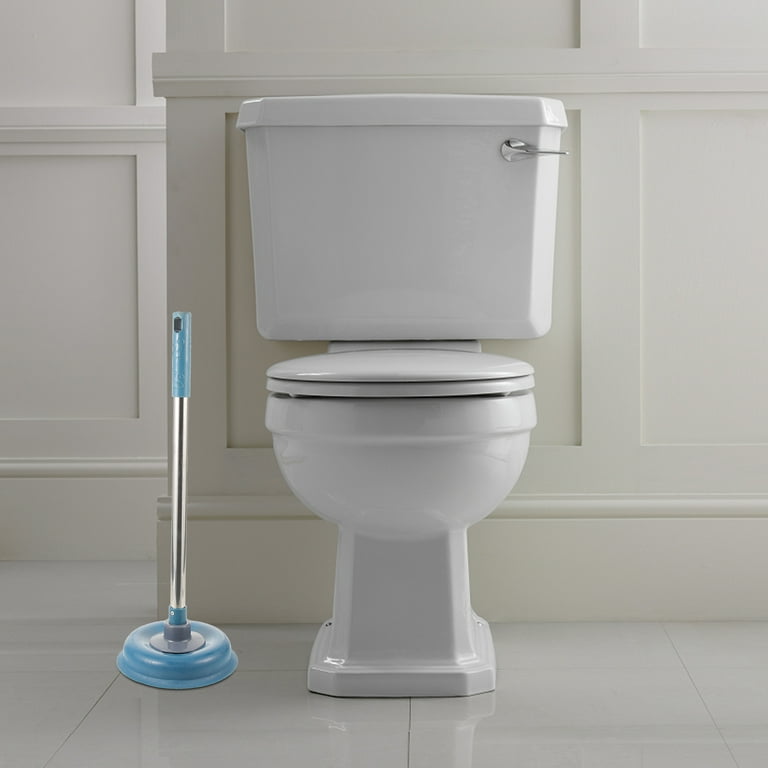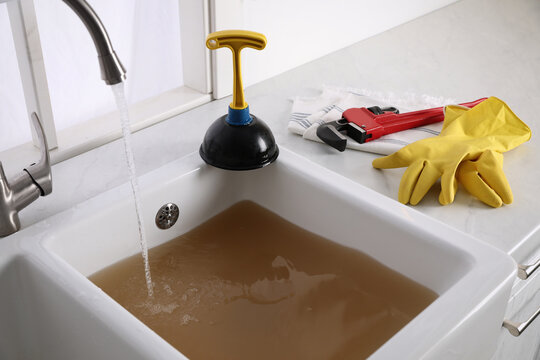How to Effectively Apply Plunger and Drain Cleaner: Professional Tips
How to Effectively Apply Plunger and Drain Cleaner: Professional Tips
Blog Article
Nearly everybody will have their own unique idea about Here's How to Correctly Use a Toilet Plunger.

Introduction
Proper upkeep of household drains is crucial for stopping obstructions and guaranteeing smooth water circulation. Among the key tools in every house owner's toolkit is the bettor, alongside various drain cleaners made to take on stubborn clogs efficiently. This post checks out exactly how to utilize bettors and drainpipe cleansers successfully to keep your drains pipes moving freely.
Section 1: Understanding Bettors
Types of Plungers
There are a number of types of plungers offered, each created for various types of drains pipes and blocks. The most common kinds consist of cup plungers, flange bettors, and accordion plungers.
How Plungers Job
Bettors deal with the concept of producing pressure and suction to displace clogs. When properly used over a drain, they produce a vacuum that can pull out particles or break up obstructions.
Choosing the Right Plunger
Picking the best bettor depends on the kind of drainpipe and the nature of the clog. Mug plungers are excellent for sinks and tubs, while flange plungers are much better matched for toilets due to their style.
Typical Blunders with Bettors
Avoiding these mistakes guarantees efficient plunging: incorrect seal around the drainpipe, inadequate force, and not clearing surrounding debris.
Section 2: Using Plungers Effectively
Preparation
Prior to diving, make certain the plunger covers the drain entirely and develops a tight seal. Clear any visible particles around the drainpipe opening.
Method
Beginning with gentle diving motions to build suction. Boost pressure slowly, using a stable rhythm. Repeat as essential up until the drain gets rid of.
Fixing Tips
If plunging doesn't function, try readjusting the seal, using oil jelly for a far better seal, or utilizing a various kind of bettor.
Area 3: Recognizing Drainpipe Cleaners
Types of Drain Cleaning Company
Drain cleansers can be chemical or chemical. Chemical cleansers make use of solid chemicals to dissolve clogs, while enzymatic cleaners use all-natural enzymes to break down raw material.
Just How Drain Cleansers Work
Chemical cleansers react with blockages to liquify them, while enzymatic cleansers break down organic materials like hair and oil without harming pipes.
Safety Factors to consider
Constantly wear handwear covers and eye defense when making use of chemical drain cleansers. Make certain adequate ventilation and adhere to producer directions meticulously.
Eco-Friendly Alternatives
Think about utilizing vinegar and baking soft drink or enzyme-based cleansers for environment-friendly options that are more secure for pipes and the atmosphere.
Area 4: Using Drainpipe Cleaners Properly
Application Techniques
Put chemical cleansers directly into the drain opening. Enable them to work for the recommended time before purging with hot water. Chemical cleansers should rest over night.
Safety measures
Stay clear of blending different kinds of cleansers, as this can generate toxic fumes. Never make use of chemical cleaners combined with a plunger, as spilling can occur.
Managing Persistent Blockages
For consistent obstructions, take into consideration using a pipes serpent or calling a professional plumber to avoid damages to pipes.
Conclusion
In conclusion, comprehending exactly how to utilize plungers and drainpipe cleaners properly is important for maintaining healthy pipes systems. By choosing the right tools and methods, homeowners can deal with small blockages and prevent significant plumbing issues down the line.
How To Properly Use A Plumbing Snake To Clear Drains
When any drain clogs in our home arise, we tend to gravitate toward the plunger and little else. In cases where the plunger and its vacuum-created pressure are not able to clear clogs, many immediately move to harmful chemicals or simply call their plumber to fix the issue.
we’re happy to help with all drain cleaning needs and concerns. This includes informing you on a few other home remedies you may have at your disposal for minor to moderate clogs, one of which is the use of a plumbing snake. Many people have never used one of these before – let’s go over the steps to take when your drain clogs and you have a plumbing snake available.
Attempt Plunger Use
The first step here, as we noted above, should indeed be to grab your plunger when you notice a drain clog and attempt to resolve it this way. If you’re unsure how to use a particular type of plunger, our plumbers can answer any questions you have. If this doesn’t do the trick, however, you move on to the snake.
Locate And Prepare Snake
A plumbing snake is a metal or plastic device that’s generally about a quarter of an inch thick. It’s design with significant extensions, meant to reach down into your clogged drain and push the clog out. Snakes also contain drain augers that will latch onto and push stubborn blockages.
If your plunger doesn’t clear a clog, locate your snake and bring it to the drain in question. We also recommend keeping a bucket nearby to collect the clog once you pull it out, plus we’d advise wearing goggles and possibly protective gloves.
Feed Snake
Once you’re ready to go, feed the snake slowly down the drain, using the crank device it comes with to keep it moving until it finds the clog. Once this happens, much of the clog will be latched onto the coil so you can pull it out, while the rest will simply break up and flow downward.
Detach Debris
Remove the snake slowly from the drain, and once you’ve done so, pick off any debris that’s stuck to the coil. This is another area where wearing gloves is a must.
Flush Drain
Finally, take a few minutes to ensure the snake has done its job correctly. If you’ve been using it on a toilet, flush the toilet a couple times and make sure everything flows well. If you’ve used it on a different drain, flush it with some room temperature water.
https://www.mybuddytheplumber.com/blog/how-to-properly-use-a-plumbing-snake-to-clear-drains/

Application Techniques
Put chemical cleansers directly into the drain opening. Enable them to work for the recommended time before purging with hot water. Chemical cleansers should rest over night.
Safety measures
Stay clear of blending different kinds of cleansers, as this can generate toxic fumes. Never make use of chemical cleaners combined with a plunger, as spilling can occur.
Managing Persistent Blockages
For consistent obstructions, take into consideration using a pipes serpent or calling a professional plumber to avoid damages to pipes.
Conclusion
In conclusion, comprehending exactly how to utilize plungers and drainpipe cleaners properly is important for maintaining healthy pipes systems. By choosing the right tools and methods, homeowners can deal with small blockages and prevent significant plumbing issues down the line.
How To Properly Use A Plumbing Snake To Clear Drains
When any drain clogs in our home arise, we tend to gravitate toward the plunger and little else. In cases where the plunger and its vacuum-created pressure are not able to clear clogs, many immediately move to harmful chemicals or simply call their plumber to fix the issue.
we’re happy to help with all drain cleaning needs and concerns. This includes informing you on a few other home remedies you may have at your disposal for minor to moderate clogs, one of which is the use of a plumbing snake. Many people have never used one of these before – let’s go over the steps to take when your drain clogs and you have a plumbing snake available.
Attempt Plunger Use
The first step here, as we noted above, should indeed be to grab your plunger when you notice a drain clog and attempt to resolve it this way. If you’re unsure how to use a particular type of plunger, our plumbers can answer any questions you have. If this doesn’t do the trick, however, you move on to the snake.
Locate And Prepare Snake
A plumbing snake is a metal or plastic device that’s generally about a quarter of an inch thick. It’s design with significant extensions, meant to reach down into your clogged drain and push the clog out. Snakes also contain drain augers that will latch onto and push stubborn blockages.
If your plunger doesn’t clear a clog, locate your snake and bring it to the drain in question. We also recommend keeping a bucket nearby to collect the clog once you pull it out, plus we’d advise wearing goggles and possibly protective gloves.
Feed Snake
Once you’re ready to go, feed the snake slowly down the drain, using the crank device it comes with to keep it moving until it finds the clog. Once this happens, much of the clog will be latched onto the coil so you can pull it out, while the rest will simply break up and flow downward.
Detach Debris
Remove the snake slowly from the drain, and once you’ve done so, pick off any debris that’s stuck to the coil. This is another area where wearing gloves is a must.
Flush Drain
Finally, take a few minutes to ensure the snake has done its job correctly. If you’ve been using it on a toilet, flush the toilet a couple times and make sure everything flows well. If you’ve used it on a different drain, flush it with some room temperature water.
https://www.mybuddytheplumber.com/blog/how-to-properly-use-a-plumbing-snake-to-clear-drains/

Do you enjoy more info about Here's How to Correctly Use a Toilet Plunger? Leave feedback down below. We would be pleased to see your responses about this blog posting. Hoping to see you back again later on. If you enjoyed reading our page please be sure to share it. Thank-you for your time spent reading it.
Call Today Report this page